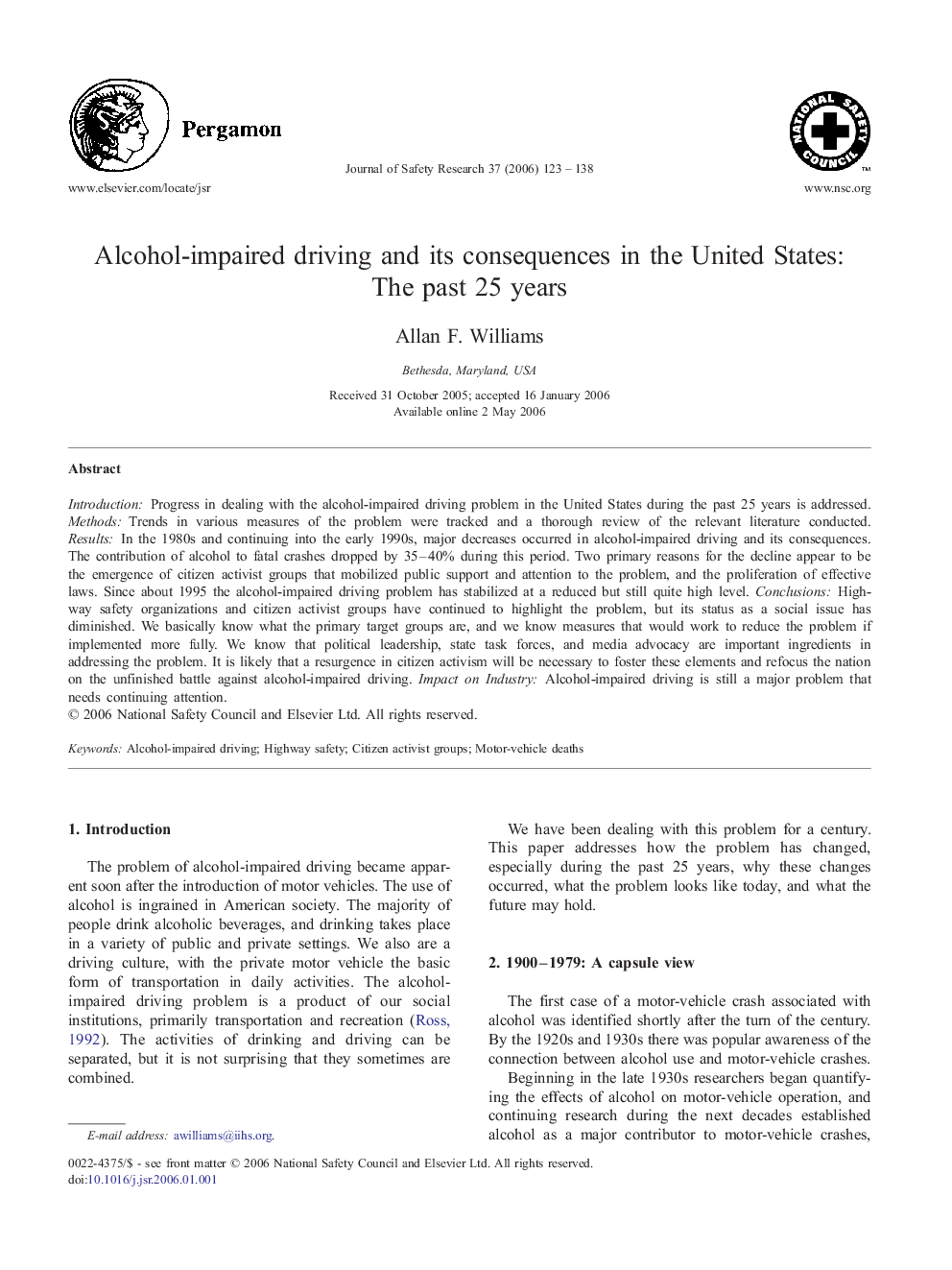| Article ID | Journal | Published Year | Pages | File Type |
|---|---|---|---|---|
| 587999 | Journal of Safety Research | 2006 | 16 Pages |
IntroductionProgress in dealing with the alcohol-impaired driving problem in the United States during the past 25 years is addressed.MethodsTrends in various measures of the problem were tracked and a thorough review of the relevant literature conducted.ResultsIn the 1980s and continuing into the early 1990s, major decreases occurred in alcohol-impaired driving and its consequences. The contribution of alcohol to fatal crashes dropped by 35–40% during this period. Two primary reasons for the decline appear to be the emergence of citizen activist groups that mobilized public support and attention to the problem, and the proliferation of effective laws. Since about 1995 the alcohol-impaired driving problem has stabilized at a reduced but still quite high level.ConclusionsHighway safety organizations and citizen activist groups have continued to highlight the problem, but its status as a social issue has diminished. We basically know what the primary target groups are, and we know measures that would work to reduce the problem if implemented more fully. We know that political leadership, state task forces, and media advocacy are important ingredients in addressing the problem. It is likely that a resurgence in citizen activism will be necessary to foster these elements and refocus the nation on the unfinished battle against alcohol-impaired driving.Impact on IndustryAlcohol-impaired driving is still a major problem that needs continuing attention.
